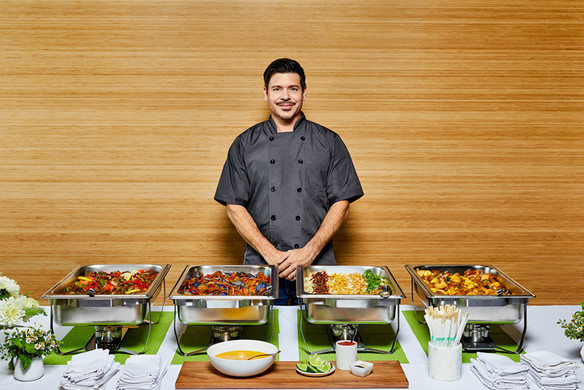Table of contents
If you own a catering business or are in the process of starting one, you should be thinking about every aspect of how your business functions, including how you take payments.
Regardless of the type of catering business you own — mobile, private, or restaurant — it’s likely that you encounter invoicing on a frequent basis. It may even be your main form of receiving payments.
Getting your business off the ground and learning how to process and receive invoices can seem a bit daunting. If you’re not sure where to start, here are some guidelines for jumping in.
A step-by-step process for getting up and running with invoices for your catering business:
Set up your business.
If you’re just getting your business up and running, there’s a lot to do before you even think about taking payments. Make sure to choose a name, design a logo, register as an LLC, secure an EIN for tax purposes, and have the proper licensing and insurance. Starting a business takes a lot of prep and planning, so make sure to do your research so you have all your bases covered. Once you’ve checked those boxes, you can start thinking of the most important part: getting paid.
Determine your pricing structure.
When it comes to catering, the jobs you take on can vary greatly from one to the next. Make sure you’ve set clear parameters around your pricing for yourself and your customers. When setting prices, you want to include line items for labor costs, a price per head for the number of people you are providing catering for, and any other services you provide (especially if you also provide delivery).
Once you’ve decided your rates, make sure they are clearly posted on your website and communicated early on to your customers. Customers are not fond of surprise fees, so if you have any service charges, be up front with your customers before including them on an invoice.
You might want to consider requiring a deposit once you’ve secured a catering job. This helps to avoid losing money from supply costs in the case of last minute cancellations.
Create a template.
Creating an invoicing template at the start helps set your catering business up for success. If you don’t know where to begin, you can look to a free invoicing template for guidance. Look for an invoice tool that you can customize and download. If you think you’ll be invoicing frequently, you might also want to look into invoicing software that lets you send invoices, collect payments, and keep track of all your transactions.
Don’t leave out the details.
When it comes to payments, your customers will appreciate a lot of detail and transparency. As we mentioned earlier, you should have a line item for each service that has a different cost. For example, labor costs are priced differently than the cost for food and materials, so each should be a separate line item.
Give clear instructions.
The biggest hurdle with invoices is making sure you get paid on time. To proactively combat those situations, make sure to be as clear as possible with payment instructions. With each invoice include the deadline for when you expect payment and an agreement about how your customers can pay you.
![]()











